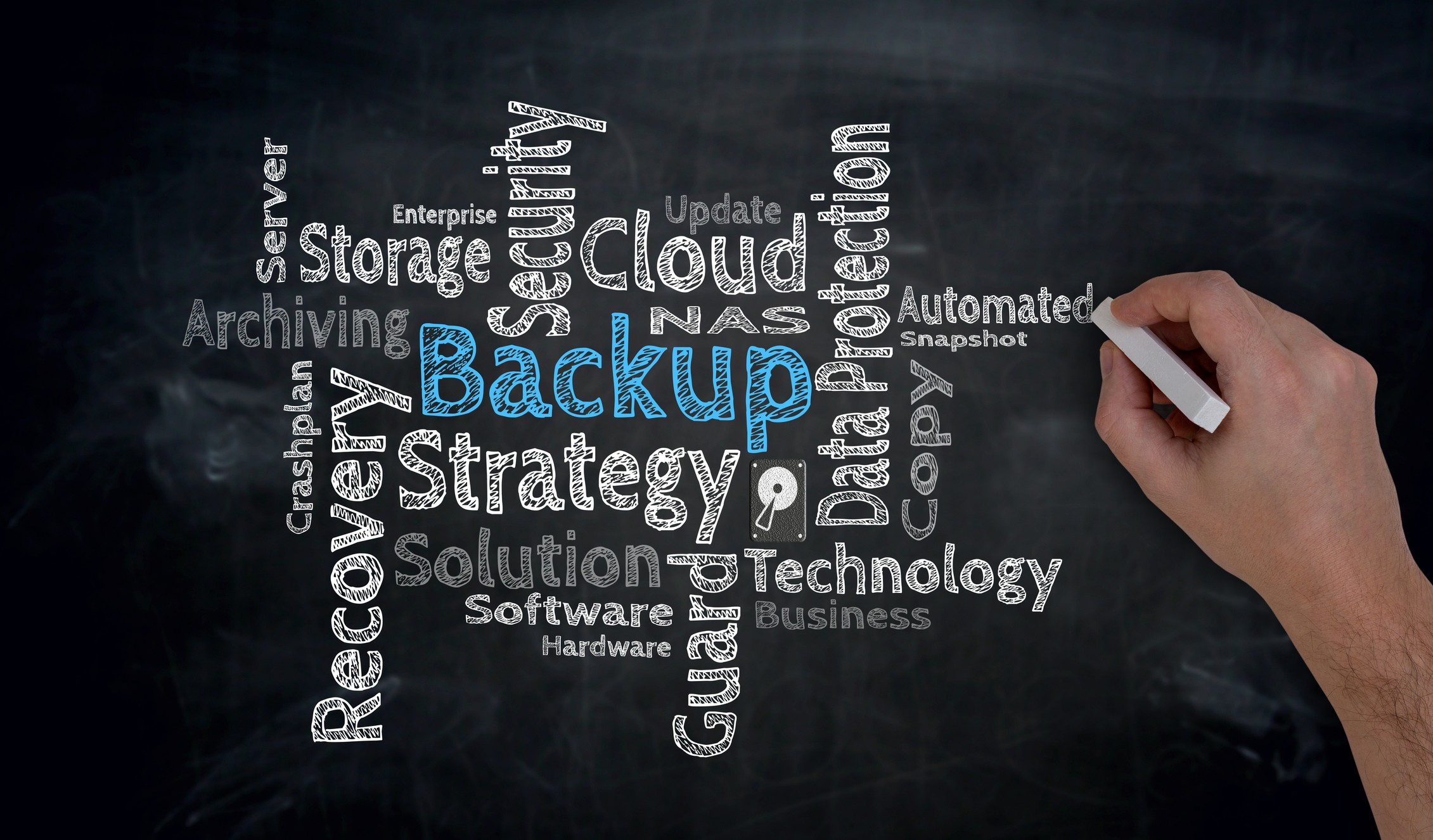November 14, 2019 by Siobhan Climer
Data is essential to modern business as well as our personal lives. Outside of important documents, family photos, accounting information, and more, our business and personal lives exist in no small part in the digital realm.
 That is why it is essential for organizations to backup data. The problem is that businesses today are creating and collecting gargantuan quantities of data.
That is why it is essential for organizations to backup data. The problem is that businesses today are creating and collecting gargantuan quantities of data.
This makes a data backup strategy complex to create:
- How do you determine which data is important to backup?
- How often do should you backup that data?
- Who is responsible for the backups?
- Where do the backups reside?
Here’s our take on the 5 must-haves of a data backup strategy.
Find out what happens when disaster recovery and cybersecurity intersect in our latest report The Crossroads Of Data Protection.
5 Must Haves In A Data Backup Strategy
Onsite Backups
 When a server crashes or fails, it is helpful to have data backups on hand for easy restoration. Speed is key to quickly getting up and running.
When a server crashes or fails, it is helpful to have data backups on hand for easy restoration. Speed is key to quickly getting up and running.
Downtime is expensive. We reported last year on the cost of downtime – which according to the Ponem0n Institute averages at $8,550 per minute.
Onsite backups are often faster to restore than cloud backups and almost always faster than offsite tape backups.
Offsite Backups
Onsite backups are valuable, but they are insufficient on their own. Should something disastrous happen to the data center, it could also damage any backups you have in the building.
 Consider the severe hurricanes and floods affecting the United States in recent years. Businesses that do not have off-site backups are at high risk of their onsite backups being destroyed.
Consider the severe hurricanes and floods affecting the United States in recent years. Businesses that do not have off-site backups are at high risk of their onsite backups being destroyed.
For that reason, it is always wise to have copies of your backups offsite where they can be accessed manually or through the cloud. Cloud-based backup policies are helpful; however, it is important to consider how network connectivity may impact your ability to access cloud backups.
Optimized Backup Schedule
 The quantity of data created and collected today requires a strategic backup policy. In addition, not all data is created equal. Some data – mission-critical data – must be backed up and restorable as quickly as possible. Other data and applications may not be as critical; these elements can be restored at a later time.
The quantity of data created and collected today requires a strategic backup policy. In addition, not all data is created equal. Some data – mission-critical data – must be backed up and restorable as quickly as possible. Other data and applications may not be as critical; these elements can be restored at a later time.
Learn more about backup rotation schemes and the 3-2-1 backup strategy to ensure key data is regularly and consistently backup up.
Backup Testing
This is the big one, and the one most organizations miss. Backups need to be tested and need to be tested regularly. Your IT staff must be trained on how to access and restore their data backups as quickly  as possible. A backup that fails or a team that is unable to restore the backup quickly undermines the company’s investment in a backup solution in the first place.
as possible. A backup that fails or a team that is unable to restore the backup quickly undermines the company’s investment in a backup solution in the first place.
We recently worked with a high-profile client that was confident they had a disaster recovery and backup strategy in place – until disaster struck and they were unable to retrieve their backups. Mitigate the damage of a disaster by testing your backups.
Organized Storage System
 Just like storing files in a filing cabinet, your backups must be organized. If you cannot locate a backup – whether a physical or digital copy – it might as well not exist.
Just like storing files in a filing cabinet, your backups must be organized. If you cannot locate a backup – whether a physical or digital copy – it might as well not exist.
Document the storage policy and how backups should be organized. We can provide a data backup policy template upon request. Let us know if we can help.
Speed Is The Key
Central to all of these backup must-haves is speed. Backups not only need to be reliable and accessible, but the company needs to be able to restore the data quickly. When assessing possible data backup strategies in your environment, do not lose sight of this metric.
Download Mindsight’s FREE White Paper On Data Backup
Mindsight’s white paper, Moving Away from Tape, takes a closer look at data backup strategies, the business demands that lead to refinement in backup processes, and the current state of the industry. From tape to the cloud, this Mindsight white paper will give you a clear picture of data backup and how to approach it in your own environment.
Download Moving Away from Tape today.
Like what you read?
Contact us today to discuss your data backup strategy.
About Mindsight
Mindsight, a Chicago IT services provider, is an extension of your team. Our culture is built on transparency and trust, and our team is made up of extraordinary people – the kinds of people you would hire. We have one of the largest expert-level engineering teams delivering the full spectrum of IT services and solutions, from cloud to infrastructure, collaboration to contact center. Our customers rely on our thought leadership, responsiveness, and dedication to solving their toughest technology challenges.
Contact us at GoMindsight.com.
About The Author
Siobhan Climer, Science and Technology Writer for Mindsight, writes about technology trends in education, healthcare, and business. She writes extensively about cybersecurity, disaster recovery, cloud services, backups, data storage, network infrastructure, and the contact center. When she’s not writing tech, she’s reading and writing fantasy, gardening, and exploring the world with her twin daughters. Find her on twitter @techtalksio.
How To Schedule Disaster Recovery Testing: Find Your Magic Number


